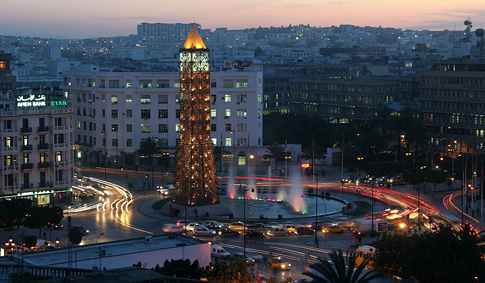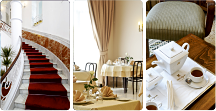| |
|
|
| |
L'ACTUALITE DE L'HOTEL MAJESTIC |
|
| |
|
|
| |
 |
|
THE CURRENCY MUSEUM |
| |
|
| |
Located in the new building of the Central Bank of Tunisia, the currency museum covers a 600 m2 area and provides a permanent exhibition telling the various changes the currency in Tunisia has known throughout 25 centuries. The collection comprises about 2 000 articles from the Punic period to the present time.
|
 |
| |
 |
|
THE SAINT VINCENT DE PAUL CATHEDRAL |
| |
|
| |
Built in a roman-byzantine style, the St Vincent de Paul cathedral was built between 1893 and 1897. It is called saint Vincent de Paul after the famous founder of the Vincentians and the daughters of mercifulness and who was — then just a young priest — captured then sold as a slave in Tunis at the very beginning of XVIIth century. The edifice was visited, among others, by Pope John Paul II when visiting Tunisia in 1997.
|
 |
| |
 |
|
THE ZITOUNA MOSQUE |
| |
|
| |
Dating back to 704 AD, the Zitouna mosque (olive tree mosque), is the main mosque of the medina of Tunis. It is the most ancient and largest sanctuary of the Tunisian capital. Constructed on an area of some 5 000 m2, the mosque has nine entrances and contains 184 ancient columns brought over mainly from the site of Carthage. For a long time it was used as a defensive post facing the sea. One can still see its two control towers standing at the north eastern and south eastern angles.
|
 |
| |
 |
|
THE MEDINA OF TUNIS |
| |
|
| |
Historic heart of Tunis, the Medina was registered as Unesco World Heritage in 1979. Founded in 698 around the initial nucleus of the Zitouna mosque, it builds its urban fabric all along the Middle Ages. Becoming the capital of a powerful kingdom at the Hafsid days, religious and intellectual seat and great economical centre open to the Middle East, the Maghreb, Africa and Europe, it boasts numerous monuments where the Ifriqiya styles mingle with Andalousian and oriental influences but which also borrow some of their columns or marquees from Roman or Byzantine monuments.
|
 |
| |
 |
|
THE BELVEDERE PARK |
| |
|
| |
Veritable oasis de freshness right in the centre of the city, the park is in actual fact a very large space criss-crossed by roads one can take on foot or by car. Arranged hillside, it contains several varieties of flowers and trees living harmoniously side by side (pine trees, palm trees, ficus trees, eucalyptus, olive trees, etc.). It also houses a zoo of 13 ha with 155 animal species from the African fauna as well as the Museum of modern art of Tunis where you can get acquainted with several contemporary Tunisian artists.
|
 |
| |
 |
|
THE MUNICIPAL THEATRE OF TUNIS |
| |
|
| |
Built in the Art nouveau style in the present Habib Bourguiba Avenue, the Municipal theatre of Tunis was inaugurated on 20th November 1902 and was then called « Municipal Casino of Tunis ». The edifice, dubbed « bonbonnière » (candy box) due to its shape, was designed by the architect Jean-Émile Resplandy, instigator of several other buildings of Tunis and the architect of the Bey family. In 2001, the theatre was entirely renovated on its hundredth anniversary.
|
 |
| |
 |
|
THE CONGRESS CENTRE |
| |
|
| |
Once an exhibition palace in Tunis, the congress centre is used today for international political meetings and various kinds of summits.
|
|
|
| |
|
|
|








